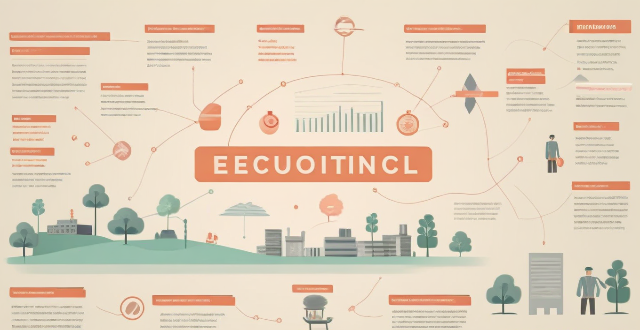Growth Invest

How do I invest my money wisely for long-term growth ?
Investing wisely for long-term growth involves setting financial goals, creating a diversified portfolio, considering risk tolerance, investing for the long-term, and monitoring investments regularly.

Is it better to save or invest money for wealth growth purposes ?
The age-old debate of whether to save or invest money for wealth growth purposes largely depends on individual circumstances, risk tolerance, and financial goals. Saving offers security and stability but low returns, while investing carries more risk but has the potential for higher rewards. The best approach for most individuals is a balance between saving and investing, with strategies such as establishing an emergency fund, allocating for short-term goals, investing for long-term goals, and regularly re-evaluating financial plans.

In what ways can investing in stocks contribute to my wealth growth ?
Investing in stocks is a well-known strategy for wealth growth, offering several advantages that can contribute to your financial prosperity. Here's a detailed look at the ways stock market investments can boost your wealth: 1\. **Capital Appreciation**: Over time, the value of stocks can increase as the company grows and becomes more profitable. This growth translates into capital appreciation for investors, potentially leading to significant returns on investment. Some companies offer dividends, which are payments made to shareholders from the company's profits. When these dividends are reinvested back into the stock, it can lead to compounded growth, further enhancing your investment's value. 2\. **Compound Interest**: By reinvesting dividends and capital gains, you leverage the power of compound interest, where your earnings generate their own earnings over time. The longer you stay invested, the more pronounced the effects of compounding become, making early and consistent investments a key factor in achieving substantial wealth growth. 3\. **Diversification**: Diversifying your portfolio across different stocks and sectors can help mitigate risks associated with any single investment. This strategy allows for stable growth by offsetting losses in some areas with gains in others. By investing in a variety of sectors, you can take advantage of cyclical trends and shifts in the economy, potentially maximizing returns by being in the right sector at the right time. 4\. **Liquidity**: Stocks are generally liquid assets, meaning they can be converted into cash quickly without significant loss in value. This liquidity provides flexibility for investors who may need access to their funds at short notice. Publicly traded stocks have a ready market, ensuring that there's usually someone willing to buy or sell, maintaining an active and efficient market environment. 5\. **Ownership Stake**: Owning stocks means having a piece of the company you invest in. This ownership stake gives you voting rights and a say in company matters, depending on the number of shares you hold. Dividends provide a regular income stream that can supplement other sources of revenue, especially beneficial for retirees or those seeking passive income. 6\. **Inflation Hedge**: Stocks represent tangible assets and real businesses that can adjust their prices in response to inflation. This ability makes them a potential hedge against inflationary pressures. Over time, as companies raise prices to combat inflation, their profits (and consequently, stock values) can increase, helping to preserve or even grow your purchasing power. 7\. **Leverage Potential**: Some investors use margin trading to leverage their investments, essentially borrowing money to buy more stocks. While this increases risk, it can also amplify returns when the market is favorable. Options allow investors to control a larger number of shares with a smaller initial investment, providing another layer of leverage for those who understand the complexities and risks involved. Overall, investing in stocks offers numerous avenues for wealth growth, from capital appreciation and compound interest to diversification and liquidity benefits. By strategically selecting stocks and managing your portfolio wisely, you can position yourself for long-term financial success. However, it's essential to conduct thorough research, consider your risk tolerance, and possibly consult with a financial advisor to make well-informed investment decisions.

How does real estate investing compare to other methods of wealth growth ?
This text compares real estate investing with other wealth growth methods. It outlines the advantages and disadvantages of real estate investing, such as appreciation, cash flow, tax benefits, leverage, and diversification, but also mentions liquidity issues, management responsibilities, market risks, high upfront costs, and the risk of tenant damage. The text then explores alternative wealth growth methods, including stock market investing, bond investing, cryptocurrency investing, art and antiques investing, and gold and precious metals investing. It highlights the pros and cons of each method, such as liquidity, diversification, stability, fixed income, high risk/high reward, technology exposure, aesthetic value, scarcity, subjectivity, storage and maintenance, hedge against inflation, physical asset, limited upside, storage and insurance costs, and no cash flow. Finally, the text emphasizes the importance of understanding the risks and rewards associated with each option and choosing the one that aligns with your financial goals and risk tolerance.

How much money should I invest in cryptocurrencies ?
Investing in cryptocurrencies has become a popular trend, but determining how much money to invest can be challenging. Factors such as risk tolerance, investment goals, market conditions, and the need for diversification should be considered before making any investment decisions. It is important to carefully consider these factors and only invest what you are comfortable losing, as investing in cryptocurrencies carries risks.

What is the best cryptocurrency to invest in ?
The article provides a summary of the best cryptocurrencies to invest in, including Bitcoin (BTC), Ethereum (ETH), Binance Coin (BNB), and Cardano (ADA). It highlights the pros and cons of each cryptocurrency, such as high liquidity and widespread adoption for Bitcoin, smart contract functionality and a large developer community for Ethereum, usefulness on the Binance exchange and a burn mechanism for Binance Coin, and a strong academic foundation and focus on security and sustainability for Cardano. The conclusion emphasizes the importance of considering factors such as liquidity, adoption, and potential for growth when choosing a cryptocurrency to invest in, and encourages readers to do their own research before making an investment decision.

How do global economic trends affect personal wealth growth strategies ?
Global economic trends significantly influence personal wealth growth strategies by affecting factors such as interest rates, inflation, economic growth, global trade, and political stability. Understanding these trends helps individuals make informed decisions about investments and financial planning.

How have climate-related risks influenced the growth of impact investing ?
Climate-related risks have significantly influenced the growth of impact investing by making investors more aware of the potential financial risks associated with climate change. This has led to an increased demand for investments that not only generate financial returns but also address environmental and social issues. Impact investing, which focuses on creating positive social and environmental impact alongside a financial return, has emerged as a popular investment strategy in response to this trend. Key factors driving the growth of impact investing include increased awareness of climate change, regulatory pressure, consumer demand for sustainable products and services, financial opportunities in sustainable industries, and alignment with ethical values. As these trends continue to shape the global economy, we can expect impact investing to become an increasingly important part of mainstream finance.

How can individuals invest in clean energy projects ?
Investing in clean energy projects is a way to support sustainable development and fight climate change. Individuals can invest through renewable energy mutual funds, green bonds, direct investment in clean energy companies, community solar projects, and sustainable real estate investments. Examples include iShares Global Clean Energy ETF (ICLN), Toyota Green Bond, and Eco-friendly apartment complexes.

How does climate cooperation impact global economic growth ?
Climate cooperation has a positive impact on global economic growth by fostering new industries, promoting international trade and investment, stimulating innovation and research, enhancing resilience against climate impacts, and encouraging policy coherence and stability.

Can economic growth be compatible with sustainable development ?
Economic growth and sustainable development can coexist through strategies such as promoting green economies, inclusive growth, regulation and policy, technological innovation, and international collaboration.

Can I invest in financial products with a small amount of money ?
Investing in financial products with a small amount of money is possible and can be beneficial for long-term wealth growth. Minimum investment requirements vary among different financial products, but options like robo-advisors, micro-investing apps, online brokerages, ETFs, and direct stock purchases allow for low minimum investments. Starting small helps manage risk, build discipline, and take advantage of compound interest. Tips for investing small include setting clear goals, educating oneself, diversifying the portfolio, considering fees and taxes, and staying patient and disciplined.

What is the best way to invest in gold ?
This article explores the best way to invest in gold, discussing why one might want to consider adding gold to their portfolio and outlining different ways to invest in gold, such as physical gold, gold stocks and mutual funds, gold ETFs, and gold futures and options. The advantages and disadvantages of each method are discussed, and it is emphasized that the best way to invest in gold depends on individual investment goals, risk tolerance, and personal preferences.

What is the relationship between energy prices and economic growth ?
The interplay between energy prices and economic growth is multifaceted, with each influencing the other in various ways. High energy prices can impede economic expansion by escalating production costs, diminishing consumer purchasing power, and fostering inflation. They might also spur investment in alternative energies and drive resource reallocation towards efficiency, counterbalancing some of their immediate negative impacts. Conversely, robust economic growth often amplifies energy demand, propelling prices upwards unless compensated by enhanced supply or technological advancements that boost efficiency. This intricate relationship underscores the importance of strategic policy interventions to manage energy pricing dynamics for sustainable economic development.

How do I invest in tech stocks as a beginner ?
Investing in tech stocks can be a profitable venture, but it's important to approach it with caution and knowledge. Here are some steps to help you get started: 1. Educate yourself on the basics of the stock market and the technology sector. 2. Set investment goals based on your risk tolerance and desired returns. 3. Choose a reputable brokerage firm that offers access to the stock market. 4. Research individual tech stocks by looking at financial statements, earnings reports, and news articles. 5. Diversify your portfolio by investing in multiple tech stocks across different industries and companies. 6. Monitor your investments and stay informed about industry developments and company news. 7. Remember that investing in stocks involves risks, including the possibility of losing money. Do your own research and consult with a financial advisor before making any investment decisions.

How can I invest in stocks with a minimal risk ?
How to Invest in Stocks with Minimal Risk Investing in stocks can be risky, but there are strategies to minimize these risks. Diversification across stocks, sectors, and asset classes is crucial. Dollar-cost averaging helps smooth market fluctuations. Stop-loss orders limit potential losses. Long-term investing allows for market recoveries. Understanding the companies you invest in reduces unknown risks. Start small and learn as you go, staying informed about financial news. Working with a financial advisor can provide personalized guidance. Remember, no investment is completely risk-free, so assess your comfort level before making decisions.

How do tax laws impact my strategy for wealth growth ?
Tax laws play a significant role in shaping your wealth growth strategy. They can impact your investment decisions, retirement planning, and estate planning. Understanding how tax laws impact your wealth growth strategy is crucial for making informed financial decisions. By considering the tax implications of your investments, retirement planning, and estate planning, you can develop a comprehensive wealth growth strategy that maximizes your after-tax returns and helps you achieve your financial goals.

How do I invest in the stock market ?
The text provides a step-by-step guide on how to invest in the stock market. It emphasizes the importance of education, determining investment goals, choosing a strategy, opening a brokerage account, selecting investments, monitoring them, and maintaining patience and discipline. The process involves learning about different types of stocks, understanding risks, diversification, and risk management. It also includes researching brokerage firms, funding an account, choosing individual stocks or mutual funds based on company performance, and staying informed about market changes. Overall, the text encourages potential investors to approach stock market investing with careful planning and research to achieve their financial goals over time.

What is the ideal temperature for indoor plant growth ?
Indoor plants generally thrive in temperatures between 65°F to 75°F during the day and slightly cooler at night, along with proper humidity and air circulation. Maintaining these conditions helps promote healthy growth and flowering. Use a thermometer, avoid drafts, and adjust heating or cooling as needed to keep plants comfortable.

Is it safe to invest in cryptocurrency as a financial product ?
Is it safe to invest in cryptocurrency as a financial product? The answer is not straightforward, as there are both risks and potential benefits associated with this type of investment. On the one hand, cryptocurrencies are known for their high volatility, lack of regulation, and security risks, which can make them a risky investment. On the other hand, investing in cryptocurrency can potentially yield high returns, offer decentralization, and be accessible to investors. Ultimately, it is important to carefully consider the risks involved before making any investment decisions and to only invest what you are willing to lose. As with any investment, it is recommended to do your own research and consult with a financial advisor before making any decisions regarding cryptocurrency investments.

How do changes in immigration policy influence economic growth ?
Changes in immigration policy can have a significant impact on economic growth by increasing the labor force, promoting diversity, increasing consumer spending, reducing wage inflation, and increasing tax revenue.

What is the ideal percentage of income to save for wealth growth ?
This text discusses the importance of saving a portion of one's income for wealth growth and explores factors such as personal financial situation, financial goals, lifestyle choices, and income level that determine the ideal savings rate. It also provides general guidelines for saving, including starting small, increasing gradually, and aiming for at least 20% of income.

Is it a good time to invest in gold ?
Investing in gold is a popular choice for many investors, but whether it is a good time to invest depends on various factors such as market conditions, economic indicators, and personal financial goals. Market conditions are influenced by supply and demand, geopolitical events, and monetary policies. Economic indicators like inflation rates, interest rates, and economic growth can also impact the appeal of gold as an investment. Personal financial goals should also be considered, including diversification, long-term investment, and risk tolerance. It is important to assess individual circumstances and risk tolerance before making any investment decisions, and consulting with a financial advisor can provide valuable guidance tailored to specific needs and objectives.

How do climate commitments impact economic growth and development ?
The impact of climate commitments on economic growth and development is multifaceted, with both positive and negative aspects. On the positive side, these commitments stimulate innovation in renewable energy sources and energy efficiency, create new markets for green products and services, improve public health by reducing air pollution, and enhance international cooperation. On the negative side, there are transition costs associated with shifting from fossil fuels to renewable energy sources, potential job displacement in traditional industries, trade-offs between environmental protection and economic growth, and unequal distribution of benefits and costs. Despite these challenges, prioritizing sustainability can lead to long-term economic growth while protecting the environment for future generations.

How do environmental subsidy policies impact economic growth ?
The text discusses the impact of environmental subsidy policies on economic growth, highlighting both positive and negative effects. Positive impacts include stimulating innovation and technology development, enhancing energy efficiency, creating job opportunities, and improving public health. Negative impacts encompass distorting market incentives, increasing government expenditures, potential for carbon lock-in, and global trade implications. It concludes that while environmental subsidies have the potential to foster economic growth, they must be carefully designed to avoid adverse effects and contribute positively to sustainable economic development.

How do I invest in real estate without buying property ?
Real estate investment offers wealth growth opportunities without buying physical property through options like REITs, crowdfunding, syndication, online platforms, and mutual funds/ETFs. These methods provide liquidity, diversification, and passive income potential while avoiding typical challenges of direct property ownership.

How do regulations affect the growth of the commercial space industry ?
Regulations significantly influence the growth of the commercial space industry by providing a framework for innovation, ensuring safety and security, promoting competition, addressing environmental concerns, and adapting to rapid changes. Effective regulations can facilitate industry growth by reducing uncertainty and lowering barriers to entry, while also protecting public interest through strict safety standards and sustainable practices.

How can sustainable investing help achieve the United Nations Sustainable Development Goals ?
Sustainable investing, which incorporates environmental, social, and governance criteria into investment decision-making, can significantly contribute to achieving the United Nations Sustainable Development Goals. It promotes environmentally friendly practices, enhances social well-being, advances economic growth and innovation, upholds good governance and partnerships, drives market trends towards sustainability, and attracts conscience-driven consumers. By aligning financial objectives with positive societal impact, sustainable investing creates a framework for long-term, sustainable growth that benefits people, planet, and profit.

What are the key factors driving the growth of the Chinese economy ?
The growth of the Chinese economy has been driven by several key factors, including government policies and reforms, demographic dividend, globalization and export-led growth, domestic demand and consumption, and environmental sustainability and green growth. These factors have collectively contributed to rapid economic development in China over the past few decades. However, ongoing challenges such as demographic changes, environmental concerns, and global economic uncertainties require continued adaptation and innovation to sustain future growth.

Can playing sports improve one's self-confidence and personal growth ?
Playing sports can contribute to self-confidence and personal growth by developing skills, overcoming challenges, fostering teamwork and support, promoting discipline and responsibility, encouraging goal setting and achievement, and enhancing social interaction and empathy. Incorporating sports into one's lifestyle can be highly beneficial for overall well-being and personal development.